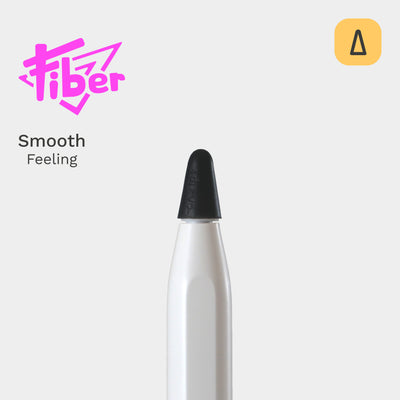A few weeks ago we released our first blog on NFTs. You got to understand what they are, how to create them and how to buy them. To recap, NFTs - non-fungible tokens - are essentially original files (JPGs, MP3, MOV, etc). Owning one means that you actually own the original digital file. Then, decentralized finance initiatives in conjunction with the interest of owning originals at the start of the future of digital art fueled a revolution in ownership and the creation of NFTs. When we published our article on it, our community (shout out to @trixalla!) let us know that we should also discuss the “bad” of NFTs. So, if you’re looking to create or buy NFTs, we’re also here to heed you to the disadvantages of this ecosystem before considering them.
They’re speculative
NFTs are now famous because of the market built around them, not because of the art itself. The long-term returns of NFTs, as with every investment, are unsure. But art is rarely seen an investment unless you believe that someone will one day see more value in the work than when you first purchased it. What makes NFTS a particularly risky bet, has nothing to do with blockchain technology but with the origin of the data itself. The first-ever NFT was developed in a one-night hackathon and the principle tokenization is still the same: it will always link to a file on the internet.
Tokenization means that a certain point of the internet is encrypted. In the case of NFTs, the point of origin is always a URL (or IPFS hash) on the internet. Most of the time, the link is hosted by the online software through which you purchased the NFT. Twitter user @jonty shared the following insights. This NFT token of this piece sold by Beeple on Nifty, is a JSON file hosted on Nifty’s servers. The same goes for the $69 million Beeple sold by Christie’s. “That NFT token refers directly to an IPFS hash. Using a public gateway, you can fetch the JSON metadata,” Jonty explains. The advantage of the hash is that it refers to a dedicated file, but the dedicated file is hosted by Makersplace.
The risk lies in the fact that this trend is very new so these startups are more likely to fail, which would mean that the link to your piece disappears. This is a common weakness shared by all NFT platforms. When you purchase a piece, you depend on the company staying afloat. Although it is registered on the holy grail, the blockchain, the links still depend on the original internet. This isn’t to downgrade the promise of the technology, but rather to be critical of its pieces’ immortality. Besides crypto wallets, do you know any app that relies on the blockchain?
They’re unsustainable
The power usage of the blockchain is the first thing that comes to mind when individuals debate the environmental issues surrounding NFTs. Bitcoin, a cryptocurrency built on the blockchain, alone produces 37 million tonnes of CO2. A recent study even showed that every $1 increase in Bitcoin value was responsible for $0.49 in health and climate changes. In the case of NFTs, verifying the transaction can take anywhere from a week to a month of the average US/EU citizen’s energy consumption.
Predominantly, this has to do with the method of verification. The current method, proof-of-work, requires energy-intensive puzzle-solving to enter a minting lottery while proof-of-stake will randomly select an individual based on the coins in their wallet. Check out this infographic for a nice overview. Ethereum, the blockchain used to trade most NFTs, has faulted to a running joke in which they have said for years that they would switch to proof of stake. To get there, everyone on the blockchain needs to be convinced that this is the way to go. But since proof-of-work is built on a network of minors that usually consort to centralized communities - it will be a long hard road before we manage that. Till then, we’ll most likely have to live with the irony that the transaction fee on Ethereum is called a “gas fee”.
They’re not yours
Owning an NFT doesn’t mean you can print it or use it anywhere you’d like to. This isn’t unfamiliar though, we also see it in license agreements on stock photo websites or music platforms. Worse though, is the catastrophe of minting other people’s work. In March 2021, there were bots all over Twitter in which individuals could mint other people’s tweets with the touch of a button. The account “tokenizedtweets” was notorious and is now banned. Some of the most popular apps in this time frame were ones that let you block Twitter users in mass, as artists jumped to block NFT spammers. What’s to stop someone from minting your selfie? Twitter user, Palmer stated “Someone can just sell a photo of your body without permission. What the f*** do we do about that?”
Whether you are familiarizing yourself with the NFT industry or needed an article to share to someone who needed to know the downsides, I hope that this article has shed a different light on what’s currently in the creative zeitgeist. We write to assist in the exploration of new opportunities to express yourself and the trend of NFTs does show promise of where blockchain technology can help artists sustain themselves and their work. However, the downsides of its experimental nature, ecological consequences and ownership challenges need to be addressed as this industry evolves. We stand with Dash’s philosophy: “The technology was built to empower the artist by enabling the ability to exercise control, not be a commercially exploitable hype.“















1 comment
propeciabuy-async
I’m not sure where you’re getting your info, but great topic. I needs to spend some time learning much more or understanding more.
Thanks for great info I was looking for this information for my mission.
Leave a comment
All comments are moderated before being published.
This site is protected by hCaptcha and the hCaptcha Privacy Policy and Terms of Service apply.